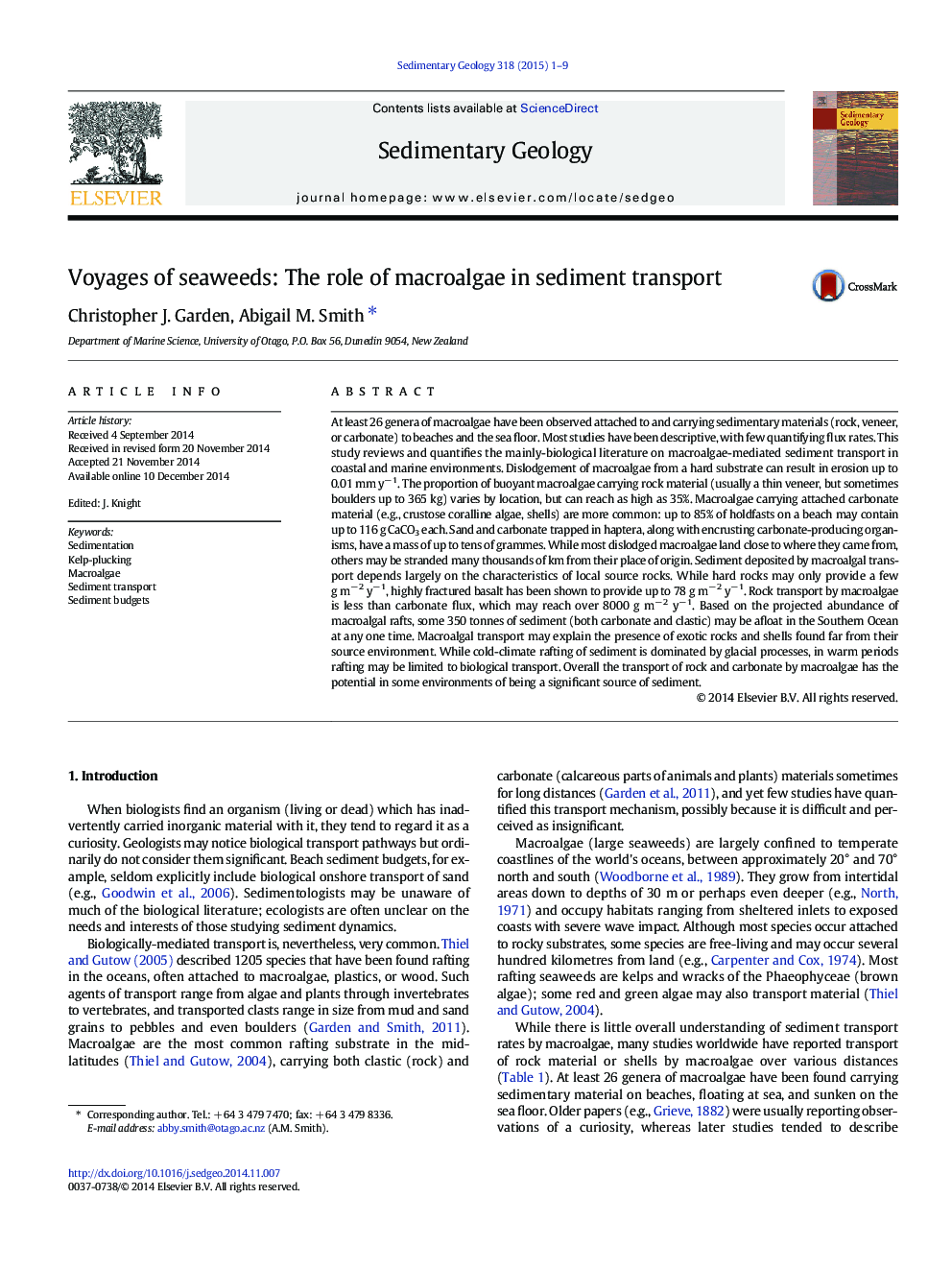| کد مقاله | کد نشریه | سال انتشار | مقاله انگلیسی | نسخه تمام متن |
|---|---|---|---|---|
| 4689267 | 1636045 | 2015 | 9 صفحه PDF | دانلود رایگان |
At least 26 genera of macroalgae have been observed attached to and carrying sedimentary materials (rock, veneer, or carbonate) to beaches and the sea floor. Most studies have been descriptive, with few quantifying flux rates. This study reviews and quantifies the mainly-biological literature on macroalgae-mediated sediment transport in coastal and marine environments. Dislodgement of macroalgae from a hard substrate can result in erosion up to 0.01 mm y− 1. The proportion of buoyant macroalgae carrying rock material (usually a thin veneer, but sometimes boulders up to 365 kg) varies by location, but can reach as high as 35%. Macroalgae carrying attached carbonate material (e.g., crustose coralline algae, shells) are more common: up to 85% of holdfasts on a beach may contain up to 116 g CaCO3 each. Sand and carbonate trapped in haptera, along with encrusting carbonate-producing organisms, have a mass of up to tens of grammes. While most dislodged macroalgae land close to where they came from, others may be stranded many thousands of km from their place of origin. Sediment deposited by macroalgal transport depends largely on the characteristics of local source rocks. While hard rocks may only provide a few g m− 2 y− 1, highly fractured basalt has been shown to provide up to 78 g m− 2 y− 1. Rock transport by macroalgae is less than carbonate flux, which may reach over 8000 g m− 2 y− 1. Based on the projected abundance of macroalgal rafts, some 350 tonnes of sediment (both carbonate and clastic) may be afloat in the Southern Ocean at any one time. Macroalgal transport may explain the presence of exotic rocks and shells found far from their source environment. While cold-climate rafting of sediment is dominated by glacial processes, in warm periods rafting may be limited to biological transport. Overall the transport of rock and carbonate by macroalgae has the potential in some environments of being a significant source of sediment.
Journal: Sedimentary Geology - Volume 318, 1 April 2015, Pages 1–9
